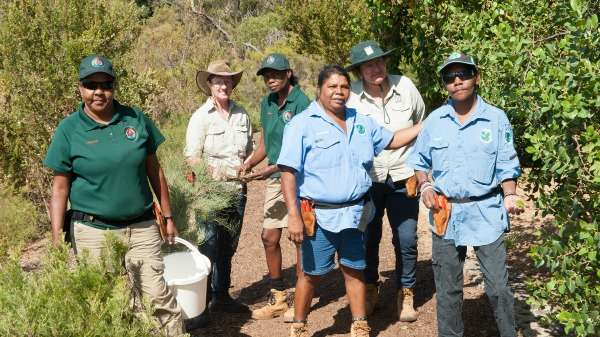Australia's new bush tucker seed bank

DEMAND for WA's native plant seeds is increasing for purposes ranging from revegetating former mine sites to high-end restaurants which use Aboriginal food plants in their cuisine.
Environs Kimberley in Broome and local Indigenous Rangers are in the early stages of developing a seed bank made up of bush tucker species and other culturally significant plants to help serve this demand.
It is intended to become both a seed shop and a repository of ecologically important plants, such as those that make up the threatened Kimberley vine thickets.
The project utilises the best of Western and traditional knowledge, ecologist and joint program manager Dr Malcolm Lindsay says.
"The rangers bring their traditional knowledge including the seasonal calendars of fruiting and flowering, knowledge of which plants occur where, which sites can be accessed and what conditions the plants like to grow in," he says.
"Much of this knowledge is better nuanced than Western science in the region as it hasn't been practised here for 40,000 years."
He says the project will have conservation outcomes.
"The collection, storage and propagation of seed will help revegetation efforts in the endangered Monsoon Vine Thickets," he says.
"The increased storage of threatened plant seed in regional and national conservation seedbanks will give insurance against loss of species."
It is also important to build better links between the Indigenous Rangers, nursery professionals and seedbank scientists to allow better two-way knowledge sharing, he says.
Project officer Kylie Weatherall says they hope the project will help address a general lack of knowledge about Kimberley seed plants.
"There's a lot of people working with plants up here who have a lot of knowledge about propagating and revegetating seeds and how to germinate them properly," she says.
"The actual seed bank itself it will be more learning about the viability of some seed species and how to best store some seeds and how long they will be good in storage.
"We will do a lot of viability testing on the seed."
Now in its initial phase the project involves traditional owner groups close to Broome including Karajarri, Nyul Nyul and Bardi-Jawi Oorany (women) rangers, Dr Lindsay says.
"However it was always planned as a regional seed bank, so future stages will extend the work to the other traditional owner groups of the Kimberley to help them with their conservation efforts," he says.
Provided by Science Network WA
This article first appeared on ScienceNetwork Western Australia a science news website based at Scitech.











.jpg)







